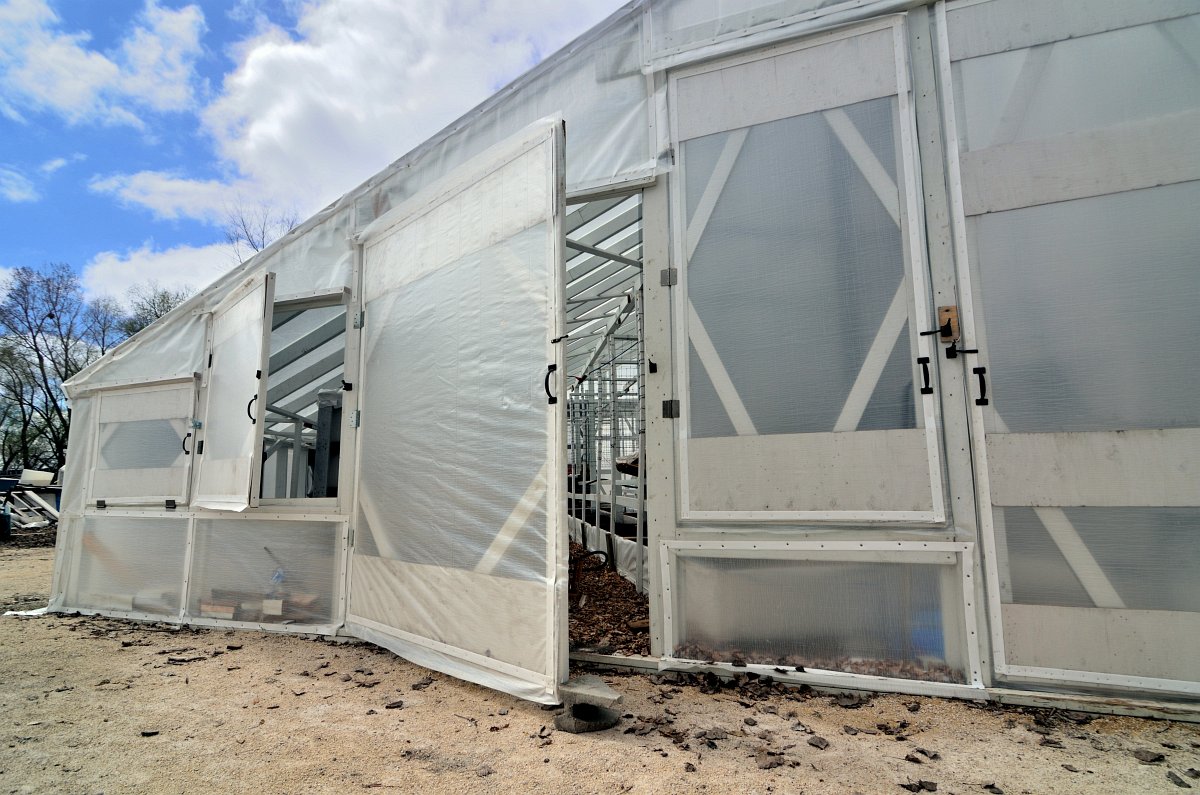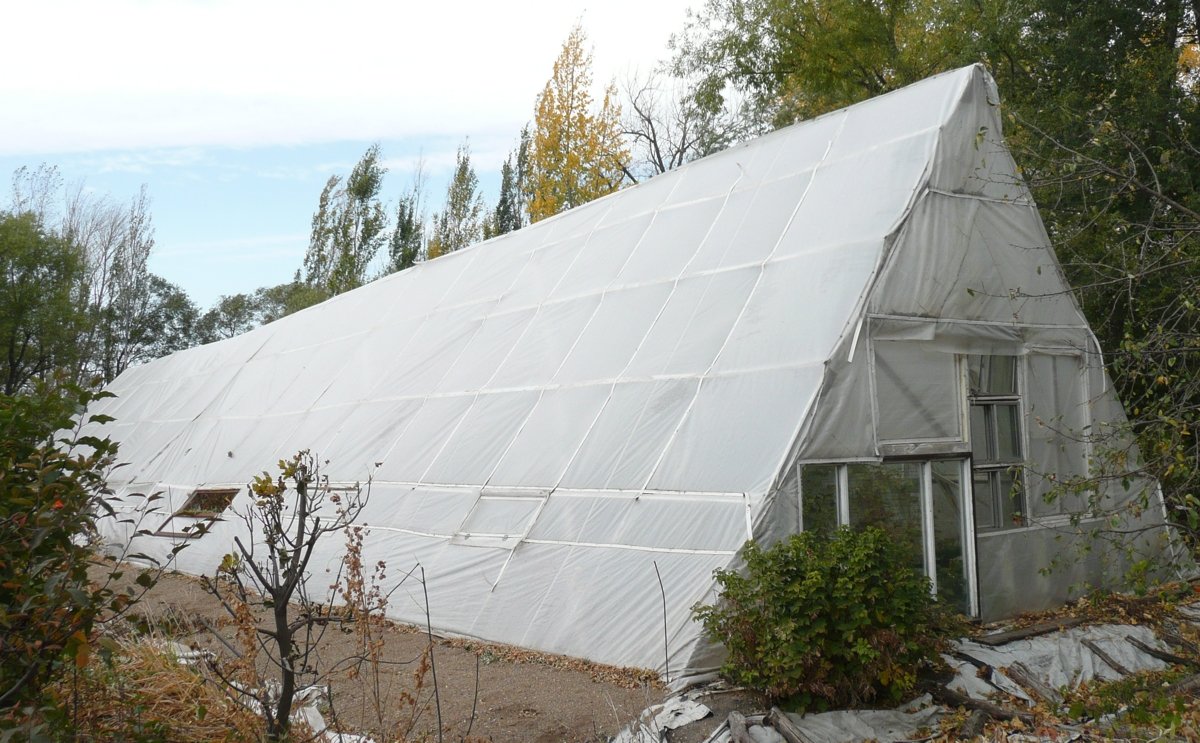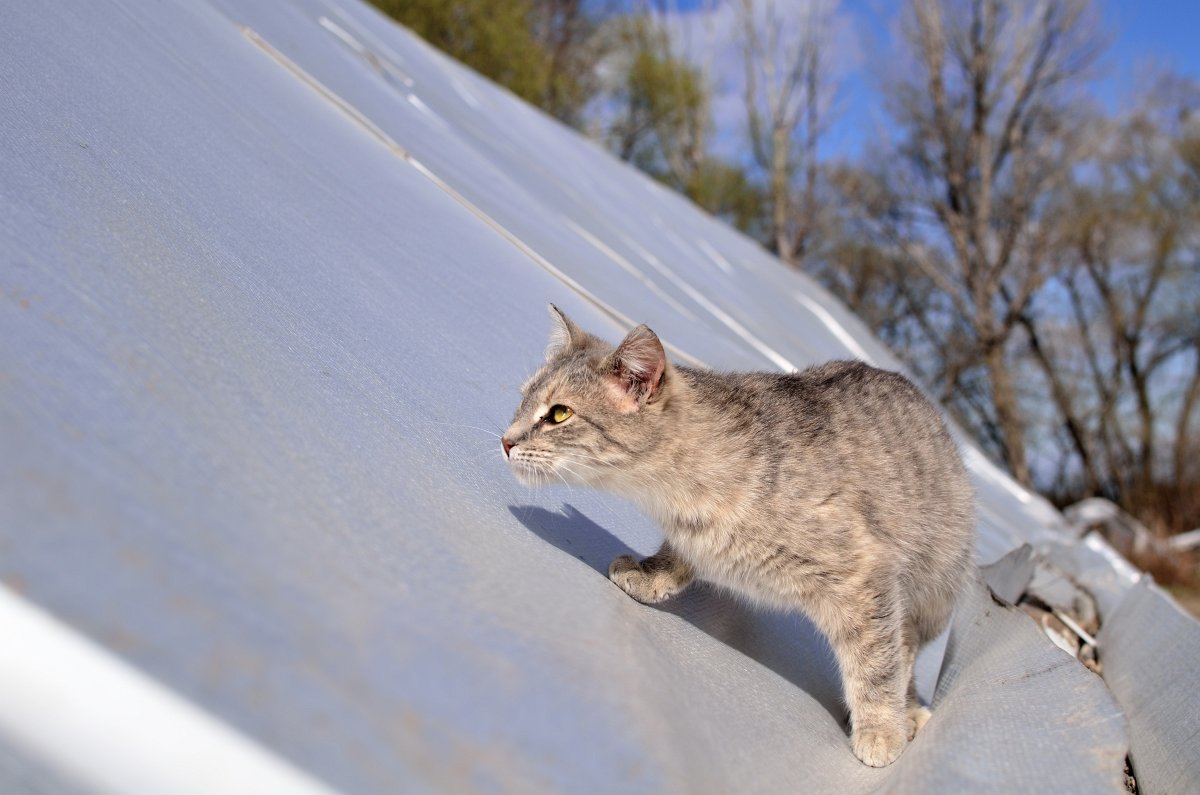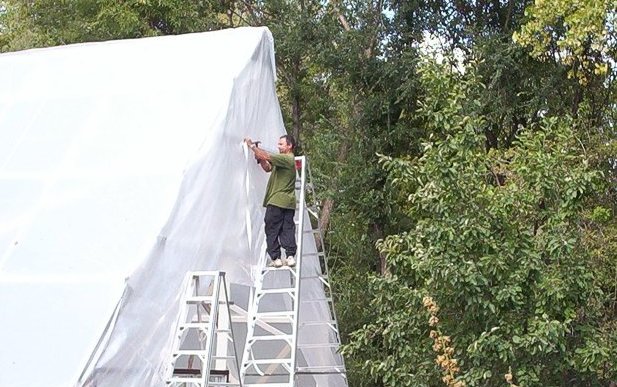help & information
More About Our Clear Superstrong Polys
Everything You Ever Wanted to Know About Our Clear Poly Greenhouse Plastic.
Geographical area of use
Virtually unlimited. Successfully tested in the cold Canadian Yukon and Northwest Territories, In Alaska, and in all areas of the United States and of Canada, from the Arctic Circle to South America, from the Atlantic to the Pacific and from one end to the other of the great central regions of our continent. Although we're located on the Canadian- American border, we have 140 degrees F. temperature range (minus 40. F to plus 100 F.) Used by hobbyists, backyard gardeners, farmers, and commercial growers.
ultraviolet stabilizer as protection
Our clear polys contain ultraviolet stabilizers and here's why. Ultraviolet solar radiation lies just beyond the violet end of the visible spectrum. It quickly breaks down untreated plastic, sometimes in 5 months in high radiation areas such as high elevations, where there is less cloud and water vapor in the air. It happened to me with regular untreated poly plastic. Our clear woven poly greenhouse plastic is treated on both sides and in the middle to resist UV breakdown. This is not always true of other brands of woven polys. Some are UV stabilized on only one side, or only in the outside coatings. Some brands are not UV stabilized at all. We sell only UV stabilized poly plastic in our clear woven poly plastic products.
life expectancy
Most of our customers get at least 3-4 years and some get 10 years or more in cloudy areas. Poly plastic life depends on quality of installation, operation and weather factors. Specifically: Placing the rafters' close enough to minimize flapping in wind, crossbracing the structure and/or rafters to prevent vibration in the wind (mentioned elsewhere), sanding the rafters smooth, wrapping the rafters with plastic if needed, installing on a warm day to get plastic tight, keeping kids and shovel blades off the poly, protection from severe thunderstorm winds, freedom from large, jagged, gale-driven hailstones, and amount of sunshine.
pro rated warranty
Because we cannot be there in person to inspect your installation, and to give you pointers on how to improve your poly life, we do not give a warranty, except for commercial growers. For commercial growers with adequate fans and ventilation, we offer a four-year prorated warranty, with the warranty being limited to the prorated cost of the poly for the unexpired months of warranty. We do NOT give any warranty for cost of produce lost, labor, or other problems. Our prorated warranty covers poly cost only, as explained above.
water and chemical resistance
Triple layered woven poly greenhouse plastic is water-proof, rot and mildew resistant, and resistant to most chemicals (inorganic acids, alkalis, aqueous salt solutions) (particularly important in coastal areas like B.C., the Maritimes, Washington, Oregon, Atlantic States, and Gulf Coast).
puncture, pinhole & cat resistance
Punctures are the bane of unwoven plastics. Pinholes or punctures can easily expand like a tear in your pants. Our woven poly's thickness, density, & cross-weave are very resistant to punctures. I sometimes strike my greenhouse covering with a rake handle and so far, no holes. It has a higher impact resistance than glass! Also, for some reason, my cats love me. When I'm in my greenhouse they try to break through. They covered my regular poly with pinholes from their claws as they climbed it. However, our woven poly resists them due to its toughness. An added bonus is that due to its translucence, they can't see through it.
test it yourself!
Puncture our woven poly with a nail. Try to expand the hole with your finger, you'll find it resistant to expansion due to the cross-weave. Just try this same test with "regular" poly. Now make a hole with a pin. Grab the borders of the plastic and quickly flex the plastic like a strong wind. Watch the hole vanish as the tightly woven fibers wiggle in to fill the hole.
strength & toughness
Its dense cross-weave makes our Superstrong Woven Poly stronger than the most non-woven plastics, even the thick ones. Thus its thickness, weave, high density, and lamination all add up to extra toughness.
Try tearing it with your hands. If you can tear it, write me (and mention the size of your hands). Two more "strength experiments". The following "experiments" can be performed at your own risk. We don't really recommend them. Please make sure you use safety equipment and common sense to protect yourself and others from harm if you try them. Most of you will find it safer and more convenient to just conduct the experiments in your mind and imagine the results, based on what you know.
"Experiment A" (Please remember safety precautions!) Try throwing rocks of equal size at three discarded window frames covered with woven poly, regular poly, and glass. The results of this experiment will persuade you that our products have greater strength. Strength is important to resist rocks and branches, to resist hail, high winds, animals such as dogs, cats, and rodents, neighboring kids, and heavy snow loading.
"Experiment B" (Please remember safety precautions!) Tack down tightly a piece of woven poly on a frame the same size as a discarded framed window. Do the same with regular unwoven poly. Jack up all three frames a few inches off the ground. Then (in appropriate safety gear only) start walking by turns on the glass, the plain poly, and the woven poly. Tell me which two breaks first; better still, tell others! Again, our woven poly wins! And you win, if you choose to buy it for your buildings and projects!
stretch & sag resistance
Our woven poly is highly resistant to stretch due to the dense tight weave. Try stretching it & stretching regular polys. Once regular (non-woven) poly is stretched it can sag, inviting destructive flapping in gales. Woven poly will resist stretching & keep its original tautness well under stress.
hot weather resistance
Plastic expands in the heat. One summer day it got pretty hot here. One year before starting to sell woven poly, I covered my greenhouse with a less expensive 6 mil plastic. That plastic expanded and sagged in the heat. Along came a prairie thunderstorm and the winds started flapping that loose plastic like a rag doll. It was over in minutes. The 6 mils covering hung in shreds. The dense poly weave of woven plastic stands up well here in summer storms. If you want to test it, mount it and brand X on two identical frames corresponding to the space between 2 of your greenhouse rafters. Turn your house temperature up to 95 degrees. Turn your teen's mini jet aircraft engine up to a wind speed of 80mph (just kidding) and watch the results.
wind resistance
Our woven poly is highly resistant to wind stress at any temperature due to its strength. This is important on hot days (Hot Weather Resistant) when the greenhouse is even hotter inside than out. It's even more important on cold days (Cold Weather Resistant) when the winds of winter howl mercilessly.
hail resistance
I hate hail. Many greenhouse owners fear hail more than heat, cold, or gales. Large jagged wind-blown hailstones have taken paint off my house. Our woven poly is resistant to hailstones due to its thickness, lamination, high-density & the tight weave. Small hail bounces off it like a kid on a trampoline. If you live in a hail-prone area, a steeper angle is better ideally. It is cheaper to cover a greenhouse with plastic if needed, than with glass if you get repeated devastating hailstorms. It's also easier and faster to install or replace in an emergency. Here's another "Silly Experiment": Try this: (Again, please remember safety.) Mount glass, woven poly, and regular plastic in identical frames. Hire Hank Aaron (a baseball player in the past) if you want, and start throwing ice cubes of increasing size at the glass and plastic. Let me know the results. (It's best to do this test where strangers can't see you!)
The Great Ice-Cube Caper
From Pete R. in eastern B.C. "Yes, Bob, I tried your simulated hail test...I dug 2 dozen ice cubes out of my little propane refrigerator...and carried them outside to where I had your hapless sample of plastic tucked into an old window frame. Well, I commenced to hurl ice cubes at that pitiful petroleum product and you know, it held up just fine. As the cubes melted in my hands with each succession, I was able to simulate smaller hailstones. Some of my neighbors happened to come by, but quickly left, ignoring my invitation to stay and throw a few hailstones at the plastic!"
P.R. of British Columbia
light transmission
Most plants require 65% to 85% of available light for optimum growth. Woven poly's light transmission is very favorable compared to greenhouse fiberglass. Commercial greenhouses are growing high yielding tomato and cucumber crops under it, crops needing maximum light. Rafters can be farther apart than for glass permitting more light as well. Optimum light transmission remains high throughout our poly life due to protection from the yellowing or discoloring common to many other coverings.
diffusion And Entrapment of Light
Woven poly is not clear like glass. It is translucent, diffusing light in all directions. When I am at home I can look through our bedroom window into the lean-to greenhouse on the south side of our house. In full sunlight I can read and am not blinded by the light since a soft, diffused, uniform, glare-free light is produced by our woven poly. Houseplants thrive, the carpet doesn't fade, and strangers can't see in. A few of our customers run photographic studios & one studio owner told us our woven poly creates the ideal conditions for color work and editing because of the bright clear well-diffused light.
The WEAVE reflects and "traps" light, lowering light escape, bouncing it around like a frosted mirror. Many comment how bright it is in a woven poly greenhouse on a cloudy day.
translucence Lessens Leaf Burning and Hot Spots
Leaf burn is a common problem under clear glass or plastic, especially on hot, clear, windless days. The solution used to be whitewash and/or add light-shading materials such as shade cloth or lath. An undesirable side effect of whitewash is that the light reduction is permanent, even on cloudy days when you don't want it. In many cases shade cloth or whitewash are not even needed with woven poly's nice even light distribution. Woven poly provides an excellent diffused light, which is free of glare, hot spots, and sun shafts, thus reducing or eliminating damaging leaf burn. The extra labor costs & extra shading-product cost is eliminated, all with no reduction in light.
translucence develops more uniform plant shape
A clear covering on a sunny day casts intense shadows, in the greenhouse corners and below rafters. Woven poly diffuses (scatters) the light similar to a day with a high thin cloud cover where the light comes from all directions. You may observe the lack of shadows. Woven poly acts as a dispersion screen at no extra cost. This illuminates the plants from all directions, eliminating shadows, and giving a more uniform plant shape. They won't become one-sided trying to face the sun.
translucence develops better fruit & flowers
Hot spots and varying temperatures can lead to flower malformation and decreased growth. Diffused (scattered) light reduces such fluctuations and the moisture content of buds and fruit becomes more uniform.
translucence allows more growing area
The need for re-racking (moving around) the plants is reduced as more light reaches around and even in some cases under the benches.
less leakage
The large width and length of poly panels mean less leaky joints and less edge/perimeter length. This cuts down on leakage of water and air. Little sealing is needed, compared to glass. It eliminates most of the potentially expensive drafts at leaky joints, typical of many glass greenhouses.
heat loss minimized
The flat surface has 20% less surface than corrugated types thus reducing heat loss and requiring less energy to maintain the desired temperature.
speed of installation
It's far quicker to install a wide sheet of woven poly than the smaller widths and lengths of glass or solid plastics. Extra sealing time is eliminated (just nail the edges down instead of using a caulking gun). Also eliminated is the continual re-puttying of edges that glass can require.
woven poly allows lighter supporting structures
Glass requires a stronger, heavier more rigid structure, to carry the dead weight. Poly is lighter and can thus be attached to a lighter frame.
woven poly also allows less expensive foundations
Woven poly weighs less than glass and is not breakable. This eliminates the need for heavy foundations which frequently have to be extended beneath the frost line (6 feet deep in this area) to prevent the heaving in spring which could break the glass. Such a foundation may cost more than the greenhouse itself. With woven poly I can use free/cheap railway ties for a very strong but cheap foundation, which "floats" on a few inches of gravel.
[an error occurred while processing this directive] [an error occurred while processing this directive]


